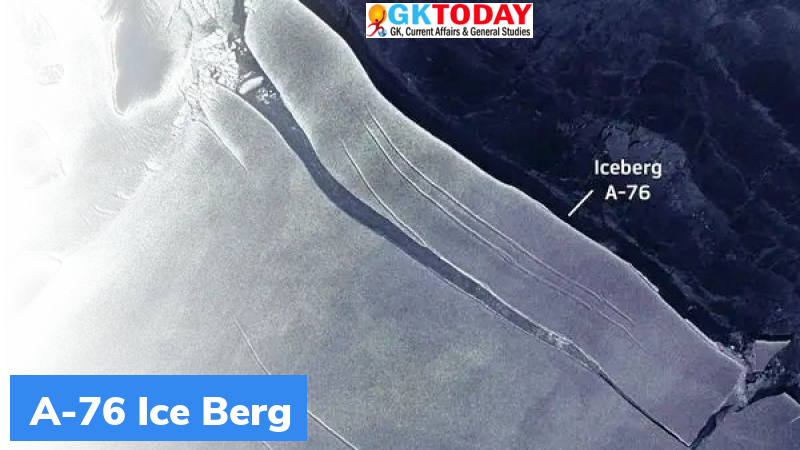A-76: World’s largest iceberg breaks off of Antarctica
An Iceberg recently calved off from the continent of Antarctica. This iceberg is now the largest iceberg in the world. It has been named as A-76.
About the Ice Berg
The Ice Berg is 170 kilometres long and 25 kilometres wide. The ice berg was spotted by a European Space Agency satellite called Copernicus Sentinel. It is a two-satellite constellation that orbits the earth’s poles.
The Ice Berg is now floating on the Weddell Sea. Weddell Sea is a large bay in the Western Antarctic.
Satellites confirmed the calving of Ice Berg
The satellites confirmed the observations made by British Antarctic Survey. The British Antarctic Survey was the first to notice the breakaway.
Impact of the ice berg on sea level
Every time an ice berg calves out from Antarctica, it adds up to the rising sea levels. However, in this case, the ice shelf from which this berg carved out was already floating on water.
The Ice Shelf from which A-76 calved out is called Ronne Ice Shelf.
Predecessor of A-76
Prior to A-76, A-74 ice berg calved out from Antarctica. Both these calving were natural. The ice calving and regrowth occurs naturally in Antarctica at defined intervals. This process helps to maintain the ice levels in the region. However, influxes of warm water in the region are affecting this natural process and increasing the rate at which ice bergs calve out. The time taken by the ice bergs to calve out is now lesser than the time taken for the same amount of ice to regrow.
Month: Current Affairs - May, 2021


